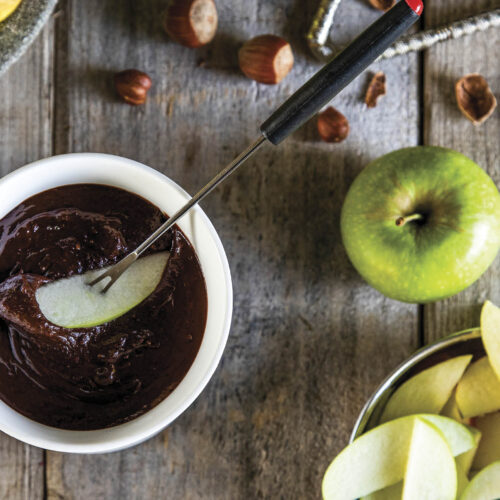Local flavours
2022-02-02T02:53:35+11:00
In her new book Mabu Mabu, First Nations chef Nornie Bero explores a wonderful array of native foods and flavours.
Nornie Bero was taught to cook by her father, growing up with a fishing spear in her hand and family all around. There was always food available, whether fish and oysters caught locally or fresh produce like mikeer fruit that had dropped onto the sand and wongai (Island plum) picked straight from the trees. Now Bero has uses her childhood experience and family love of food to incorporate indigenous ingredients in her cooking. Here’s a small selection of the indigenous fruits she uses in her recipes.
Bell Fruit Syzygium aqueum
This Island fruit looks like beautiful pink bells hanging from the tree. I would pick them like apples and eat them fresh growing up. They’re quite pale on the inside, and full of juice. I like pickling them for extra zing, like a ceviche. Bell fruit also offers crunchiness when added to cooked fish as a salsa.
Desert Lime Citrus glauca
My favourite lime. Desert limes are quite small and beautiful, and become translucent when they cook down. I love making a Desert Lime Syrup and using it in a granita or even a margarita. Desert lime is like a lime and lemon mixed together and, when used in a marmalade, it’s magic.
Illawarra Plum Podocarpus elatus
This plum isn’t juicy. It is a bit smaller than a regular plum, and all the flavour comes from the skin. I love using it in a homemade barbecue sauce – it’s sweet and spicy.
Muntries Kunzea pomifera
Also known as emu apples, muntries are somewhere between a nashi pear and a guava. They have apple vibes, but with their own flavour. Muntries are great in a chutney, and I also love them fresh – you can eat them like candy.
Riberries Syzygium luehmannii
These tiny berries make beautiful jams and cordials. They have a unique flavour – spicy and clovey. Riberry fruits can be hard to find, so get in quick if you see them.
Try these suppliers for more hard-to-get ingredients:
- barbushco.com.au
- creativenativefoods.com.au
- indigiearth.com.au
- mabumabu.com
- warndu.com
This is an edited extract fromMabu Mabu by Nornie Bero (Hardie Grant Books).







